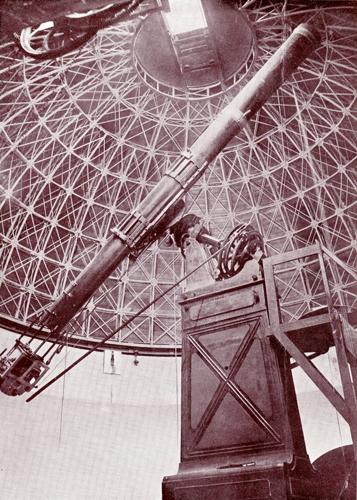
The astronomical instruments’ collection of the Astrophysical Observatory of Catania comes from the envelope of the Royal Observatory mainly, established by the will of the astronomer Pietro Tacchini in the late nineteenth century. The first observatory, opened in 1880, was built on the volcano Etna, while the branch citizen born in 1885.
In 1887 Tacchini took part at the first Astrophotographic World Congress in Paris, and he proposed that the Catania Astrophysical Observatory partecipate to the initiative promoted by the French Academy for the realization of the Carte du Ciel, the first catalog and photographic atlas of the entire sky. To the great scientific project took part 18 stations in the world: Algiers, Paris, Oxford, Toulouse, Bordeaux, Greenwich, Helsinki, Potsdam, San Fernando, Tacubaya, Santiago, La Plata, Rio de Janeiro, Cape Town, Melbourne, Sydney, the Observatory Vatican and Catania. The Catania Astrophysical Observatory was the only italian representative to this first great scientific project of international scope.
It was founded in Catania, in 1890, the first Italian chair of astrophysics, headed by another astronomer of Modena: Annibale Riccò. With Riccò born the Astrophysical Observatory or rather the Institute of Astrophysics of the University of Catania, located in some rooms of the former Benedictine Monastery.

The Observatory Bellini on Etna operated until 1925, and was destroyed by an eruption in April 1971, while the various pavilions in the citizen observatory, built in the garden of the Benedictine Monastery, were demolished in the early '70s of the last century. The first observatory was instead demolished in 1982 on the initiative of the Superintendent of Catania.
Most astronomical instruments of the collection awaits restoration and placement in a museum proper now. The knowledge of the instrumental material, which characterized the astronomical research of the Observatory of Catania in the last century, is of great importance for a historical reconstruction of scientific observation and research carried out by the Royal Astrophysical Observatory of Catania.
A small part of the collection is now housed in several cabinets in glass placed at the entrance of the Astrophysical Observatory of Catania, where you can admire with guided tours curated by astronomers.